This article is part of the Under the Lens series
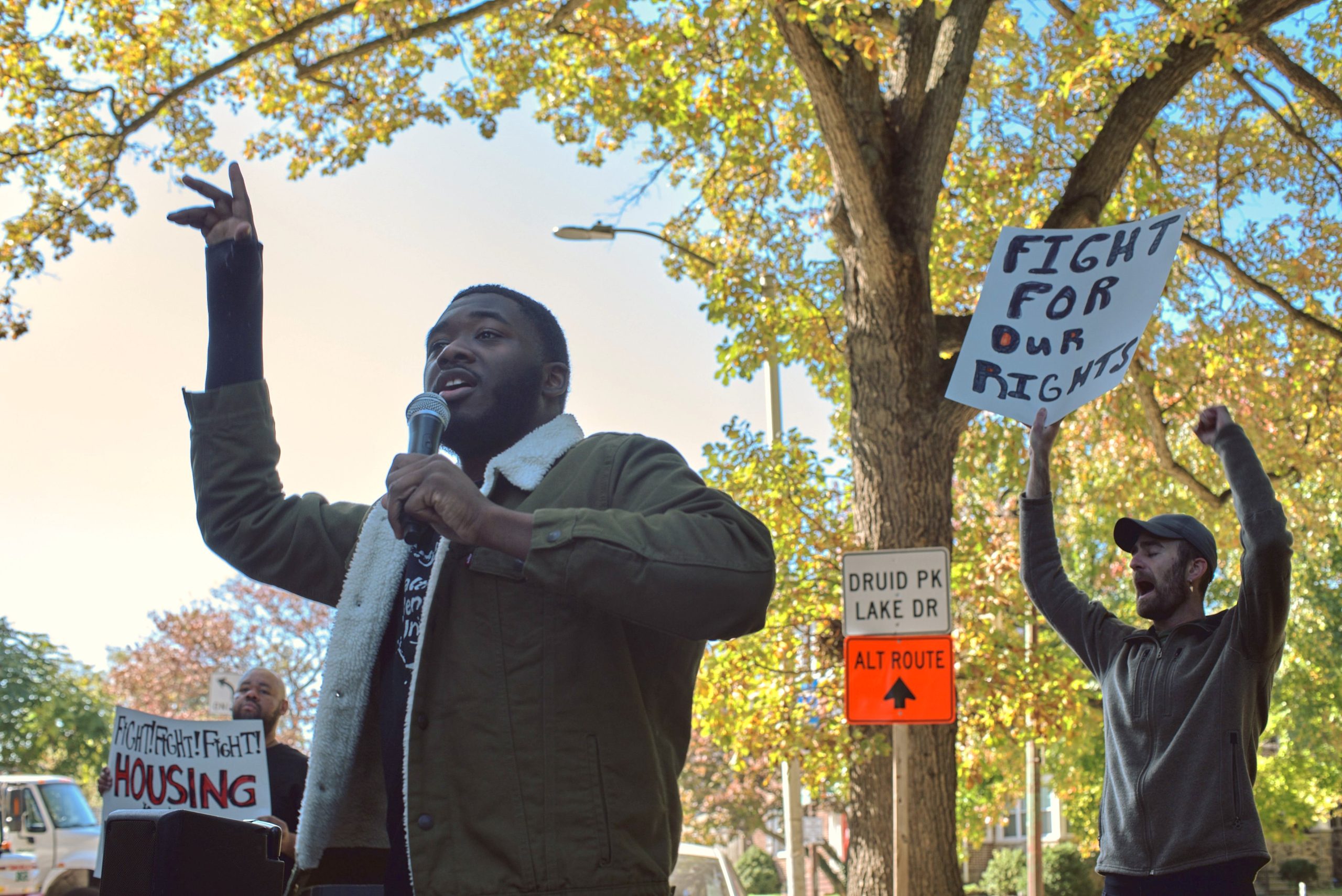
Tenants who live in Wyman House in Baltimore gather to protest deteriorating living conditions at the apartment building. Photo courtesy of Baltimore Renters United, via Detrese Dowridge
By the time Detrese Dowridge entered the tenant organizing world around 2013, she’d been a renter for more than a decade. Some of her renting experiences had been fine. Others, not so much.
It never dawned on Dowridge that organizations existed to address tenants rights. “I was just under the impression to pay my rent . . . and if they’re not doing anything [about maintenance or living conditions] just keep on them until they do.”
Dowridge was working part time and at temp jobs, which sometimes meant she had to pay her rent a few days late. She happened to be home the day an organizer from Right to Housing Alliance (RHA)—a tenants rights group in Baltimore—knocked on her door. RHA was canvassing the building because the landlord had been filing excessive failure-to-pay notices in housing court.
“When I would pay what I owed before the court date, [the landlord] would send me a separate notice saying I owed some more money, but they didn’t put that into their original failure-to-pay complaint. And I’d just pay it,” Dowridge says. “I just knew something was off. So I decided to attend one of [RHA’s] meetings.”
At that first meeting an attorney looked over Dowridge’s accounting ledger and agreed she was being overcharged. After learning she had rights as a tenant, Dowridge started canvassing her neighbors, mobilizing them to help her push the landlord to address habitability issues in the building—including a rodent infestation, water leaks, and no heat. She couldn’t get traction on the repairs, but in 2014, Dowridge and her neighbors settled a class-action lawsuit against the property management company for illegal fee churning, “which is a system that’s designed to keep us in debt by making it seem like we owed money when we really didn’t,” Dowridge says.
Dowridge was hooked. She kept volunteering with RHA, which in 2021 merged with Baltimore Renters United (BRU). In June of this year, BRU hired her as a full-time organizer.
Post-Mortgage-Crisis Activism: An Unlikely Partnership
Dowridge is part of a resurgence of tenant activism that’s been growing at least since the foreclosure crisis that started in 2007 and the ensuing Great Recession.
Leading up to the foreclosure crisis, in the late ‘90s and early 2000s, a high-profile wave of gentrification associated with a rekindled interest in urban living displaced lower-income, largely Black and brown residents in major city centers. When the foreclosure crisis hit, the displacement that followed prompted a groundswell of housing justice activism across the country, on behalf of both homeowners and renters.
Julian Francis Park, a longtime tenants rights activist, lived in Rhode Island at the time, a state that didn’t then have eviction protection laws in place. The foreclosure crisis fallout created a “unique thing . . . a possibility for an alliance between homeowners and tenants,” Park says. Not only were huge swaths of lower-income, often non-white homeowners facing bank foreclosure thanks to predatory loans, a substantial number of renters were also being evicted from homes that were being foreclosed on.

In a project called “Letters to Bank of America,” artist John Hulsey projects letters folks wrote to bank representatives about their experience with foreclosure and eviction onto the outside walls of bank branches that owned the families’ mortgages. Photo courtesy of City Life/Vida Urbana
As a result of these mass evictions, groups like Direct Action for Rights and Equality (DARE) in Providence, Rhode Island; City Life/Vida Urbana in Boston; and St. Peter’s Housing Committee and Just Cause Oakland in California (which later combined to form Causa Justa :: Just Cause) took up against foreclosures on behalf of both tenants and homeowners.
The foreclosure crisis “was a breakthrough in that, for the first time, low-income homeowners, public housing residents, and private renters started to see commonalities among themselves,” says Tony Romano, senior advisor for field organizing at Right to the City, a national alliance of 90-plus community-based organizing groups, including DARE.
It was during this intersection of commonalities that the “renter class consciousness” formed, he says, creating a singular movement homeowners and renters supported.
“You can’t just take for granted that the working-class homeowners are going to back up public housing tenants,” says Romano, who’s been an organizer for more than 25 years. “What some of our groups started to understand, and I think one of the leading groups was City Life/Vida Urbana in Boston, was that homeowners are really just banks’ tenants. And one thing we have in common—public housing tenants, private renters, and low-income homeowners—is that we don’t have significant control over our land and housing. The government can take our public housing. The banks can take our houses if we miss just one payment.”
Steve Meacham, an organizer with City Life/Vida Urbana—a nearly 50-year-old grassroots housing and social justice organization—recalls that when foreclosures and evictions started ramping up around 2007, the organization didn’t at first think defending homeowners against bank foreclosure was its role.
“But then we discovered that the main evictor in housing court was Deutsche Bank, and of the top 10 evictors, 5 of them were banks,” he says. “So it became clear that what was happening was not only were tenants being evicted after foreclosure, but also homeowners. So we said, ‘Look, we know how to fight eviction; that’s what we do.’ So we kind of opened up a new front in the fight against foreclosure.”
Since homeowners at the time, especially homeowners of color, were often “underwater” on their loans (meaning they owed more on their homes than they were worth), City Life/Vida Urbana was able to successfully negotiate with banks on behalf of homeowners who’d been foreclosed on. The organization saved hundreds of homeowners from losing their homes by getting the note-holding bank to agree to sell the properties back to their foreclosed-upon owners at the home’s current market value.
“It really gave a new reality to City Life’s historic understanding that we represent tenants and small owners. We represent residents,” Meacham says. “So that includes tenants and small owners who live in the buildings they own. And for a while, for about 5 or 6 years, our [office] was filled with 100 people every week, almost all homeowners facing eviction and foreclosure.”
[RELATED ARTICLE: The Sword and the Shield]
While the U.S. economy started its uneven recovery in 2009, many homeowners weren’t able to bounce back after suffering a collective loss of $16 trillion in net worth. Ten million people lost their homes to foreclosure (the bulk of whom were, again, non-white property owners, a demographic that was disproportionately affected by the foreclosure crisis). Many of those 10 million former homeowners were forced to become renters—increasing pressure on an already tight rental market. Post-recession housing construction also cratered, and hasn’t recovered.
The post-recession economic recovery also spurred another wave of gentrification, specifically in urban areas that experienced increasing job opportunities in high-income industries, such as tech jobs in the Bay Area. As high-paying jobs moved into areas lacking the housing stock to absorb a growing population, lower-income, often longtime residents were priced out of homes, neighborhoods, and entire cities. These factors led to another upswing in tenant organizing.
In 2009, Congress passed the Protecting Tenants at Foreclosure Act to safeguard tenant stability caused by the foreclosure crisis; that year, renters made up 40 percent of families facing foreclosure and rental properties constituted approximately 20 percent of all homes being foreclosed on.
High foreclosure rates continued for years. Nationally, for example, 830,000 foreclosures were completed in 2011, with more than half of those in just two states: 281,237 in California and another 202,746 in Florida. Other hard-hit states included Illinois (123,871), Michigan (85,383), and Georgia (81,129). Rhode Island, where Park had started working in the tenant justice movement, suffered less by comparison, with 2,921 foreclosures completed in 2011—most in already-distressed communities. It was still a marked increase from the previous years, and the surge coincided with statewide rents increasing by more than 50 percent during the previous decade.
Park recalls that this wave of foreclosures and skyrocketing rents led tenant organizers to shift their focus to landlords rather than banks, calling out landlords who were serving up no-cause eviction notices so they could jack up rents and attract higher-income tenants.
Foreclosures began to ebb after 2011, and by the end of 2012, the number of borrowers being foreclosed upon had dropped to pre-housing crash levels. But that didn’t mean relief for renters. As folks lost their homes to bank foreclosure, many were scooped up by corporate landlords and put up for rent. This influx of homeowners-turned-renters further squeezed already-tight vacancy rates. With the economy recovering, housing in short supply, few tenant protections in place, and absentee investor-landlords holding the reins, rents rose quickly.
[RELATED ARTICLE: The Dark Side of Single-Family Rental]
While the new rental economy in the aftermath of the foreclosure crisis meant tenant organizing was already active in many metro areas, the housing justice movement got a fresh infusion of energy (as did many other justice movements) in 2016 when Donald Trump was elected president. “Everybody was kind of like, ‘What can I do to get more involved? What kind of organizing do I need to do to support my community?’” Park remembers of that time. He also recalls that it was around 2016 when some tenant organizing groups shifted their makeup from “traditional community organizations doing tenant work” to autonomous tenant unions.
One of those groups was Portland Tenants United (PTU) based in Portland, Oregon—then one of the nation’s fastest growing urban areas. Many PTU members had already been active in existing Portland housing justice organizations, such as Community Alliance of Tenants, and decided to band together to form their own all-volunteer union. At the time, tenants were at the mercy of profiteering landlords who were serving up no-cause evictions, unregulated rent increases, and retaliation against complainers. Since PTU’s inception in 2015, it’s been one of a coalition of Portland activist groups that have won rent control, relocation assistance, and just cause eviction protections.
Property owners and landlords across the nation found themselves in tenant organizers’ crosshairs for a multitude of reasons, including habitability and affordability issues. In hot housing markets—like Portland; St. Paul, Minnesota; San Francisco, and New York City—activists called on local governments to enact protections with varying levels of success, and not without a prolonged fight. New York City, for example, in 2017 began providing tenants facing eviction with free legal representation. In Portland, renters in 2018 won permanent relocation assistance following a rent increase or no-cause eviction. St. Paul City Council in 2020 enacted a handful of renter protections, including prohibiting no-cause evictions.
Mitra Jalali, a council member in St. Paul who’s dubbed herself “the first renter voice” to be elected to the position, says the new laws allow renters to claim some power and be “taken care of in the change our cities are going through.” (Before taking up politics, Jalali was a teacher and a community organizer.)
“Displacement is fundamentally about power. It’s about having power in the market so you cannot be displaced because you have wealth and stability,” Jalali says. “It’s about power in the decision-making process so you understand and know how to leverage what gets built where, when, by whom, and for whom, and it’s about having power over the meaning of a place—power to either value or devalue a place.”
Along with calling on local governments to enact renter protections, tenants groups began taking on more drastic measures, including rent strikes and home takeovers. Park says this shift to more radical tactics occurred in existing housing justice groups and the new tenant organizations forming across the country. A few of the newer autonomous groups include the Los Angeles Tenants Union, which formed in 2015, and the Autonomous Tenants Union, which formed in Chicago in 2016. In April of 2018, a group of existing tenant unions across the U.S. formed the Autonomous Tenants Union Network (ATUN). Its purpose is to “connect member unions without forming a top-down or centralized organization.”
“These groups are a little different from the traditional community organizations doing tenant work in that they tend to not have staff,” Park says. “They tend to not accept funding from anything except members. And they’re all volunteers.”
Autonomous tenant unions have since taken hold in many places, and the collaborative ATUN now counts more than two dozen member unions across the U.S. (and one in Canada). Autonomous tenant unions have popped up in places where tenant organizations didn’t always exist, such as Omaha, Nebraska; Colorado Springs, Colorado; and Rapid City, South Dakota. The all-volunteer structure allows tenants to join together and act without needing a top-down organizational structure or designated leadership.
Michael Kane, the long-time former executive director of National Alliance of HUD Tenants, says he’s also seen unique forms of tenant organizing in the years following the pandemic. As one example, he says he was recently contacted by a woman who lives in Memphis, Tennessee, but wanted advice on how to help HUD tenants in Cleveland, Mississippi.
“She knew people who were suffering in this building. I got an email from her, and I called to help her craft her appeal to HUD and also give her some advice and technical assistance on how to start a tenants group,” he says. “I’m telling this story because it’s an example of a young person who had the skills to learn from the internet about this, reached out, and did the organizing on her own without any organizing group helping her initially.”
Kane says it’s especially labor-intensive to organize tenants living in U.S. Department of Housing and Urban Development (HUD) properties because they’re typically scared to speak up for fear of landlord retaliation.
“Usually for tenants rights to be realized it takes a local organization in that city, whether it’s a legal service agency or an organizing group that can go into a building and explain to people that they have these rights, then back them up when they try to assert them,” Kane says. “There are more groups that are doing tenant organizing. There was a spike after Occupy, there’s been a spike since COVID, and a lot of people have been organizing independently.”
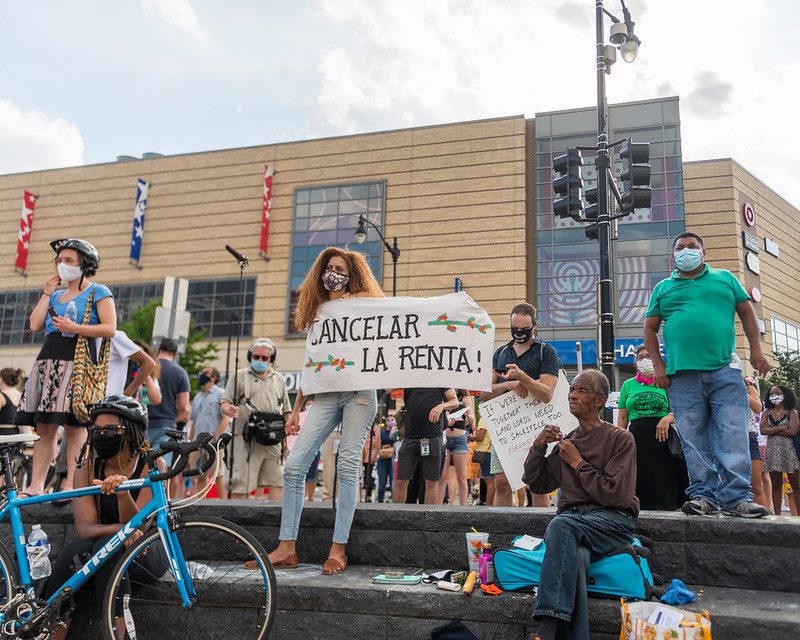
A “cancel rent” protest in Washington, D.C. in 2020. Photo courtesy of Kylie T., via Flickr, CC BY 2.0
COVID’s Role in Activating Tenants
Tenant organizing was still going strong in March 2020 when the pandemic hit, and it got additional support once renters started losing their jobs, facing harassment from landlords, and being threatened with eviction, says Shanti Singh. She is the communications and legislative director at Tenants Together, a California statewide tenants rights group that formed in 2008 and today has more than 50 organizational member and partner organizations. COVID put a bead on the housing crisis because people were instructed they were “safer at home” and ordered not to work, but weren’t provided any financial assistance to pay their rent.
“COVID really escalated all the inequities that were already there before COVID started,” Singh says. “COVID just poured gasoline on the fire, so there are more people who are facing serial eviction and homelessness and an incredibly uneven job recovery.”
The result, according to Singh and other sources for this story, was a “geographic expansion” of tenants’ unions (meaning they began forming in places where they hadn’t previously been) and a wider acceptance of and interest in rent control measures, tenant protections, and eviction prevention mechanisms. “It’s because everybody is hurting and people who were traditionally better off are awakening to their rights as tenants and are wanting to organize,” Singh says.
[RELATED ARTICLE: Biden Has Power to Impose Rent Control, Say Housing Advocates]
Kane says COVID inspired a “huge burst of organizing activity, like a forest all over the country.” The tenants who demanded an eviction moratorium and started the catchy “cancel rent” campaign, were instrumental in pushing the administration, Kane says. Although the demand for rent cancellation was ultimately unsuccessful, and “perhaps a utopian goal,” Kane says, “the idea of stopping rent payments and then coming up with federal money to pay the landlords off, basically, so that people didn’t get evicted, that’s the solution that came out of that. It spread like wildfire and had a major impact by opening the terrain for groups like the [National] Low Income Housing Coalition to step in.”
Tara Raghuveer, the Homes Guarantee program director at People’s Action—a 6-year-old advocacy organization that works for housing justice and other issues—says the increased support she’s seen since the pandemic began relates directly to “the scale, breadth, and depth of the crisis,” but also because “the tenant’s movement has done a lot of good work in the last couple of decades to really home in on the art and science of tenant organizing.”
Those advances in organizing became apparent to Raghuveer as more tenants joined the organizing ranks. They’re coming from “a place of clarity about the power they have as individuals versus the power they have as collectives” and showing they know that, as a unified front of renters they have the “power that they need to win.” As the pandemic-driven tenant uprising continues to gain traction and support, Raghuveer says, tenants and activists are gaining clarity about the fact that, with rent being recognized as a significant cause of skyrocketing inflation, renters are a “political class, a significant constituency.”
“The pandemic isn’t over, and this isn’t a project that has come to completion, but rather it’s one that’s underway,” Raghuveer says. The organization tools they’re using for the Homes Guarantee campaign are “innovative . . . we are experimenting with our methodology in communities with people across the country who are building tenant organizations, and the lessons from that experimentation are forming our broader strategy to build tenant power” nationwide.
When the pandemic began, tenants rights groups and affordable housing providers channeled their energy and resources into extending and strengthening protections, such as eviction moratoriums, for tenants who’d lost jobs or were facing other forms of financial hardship, and then later in the pandemic shifted their efforts to helping tenants trying to navigate the difficult and disorganized rental relief programs. Landlords went on the offensive, Singh says, leaving housing justice advocates to field calls about evictions, harassment, and other forms of retaliation.
“It was a political strategy . . . to put us on the defensive . . . and now, I think it’s kind of us getting back on the offensive, which I think is good,” she says. “If we didn’t have that pre-COVID, tight organizing infrastructure, I don’t think we would have been able to manage it as well, and we wouldn’t have been able to start going on the offensive in 2022.”
[RELATED ARTICLE: Housing Organizing in the Year of the Pandemic]
Singh wasn’t the only person who said the tenants’ rights movement has gained momentum and support in recent years. anneke dunbar-gronke, an attorney with the Lawyers’ Committee for Civil Rights and a member of Baltimore Renters United’s steering committee, used the same phrase—“on the offensive”—saying that, at least in Baltimore, the uprisings inspired by George Floyd’s murder-by-cop in May of 2020 lent energy to a variety of other issues, including the problems renters faced.
“People are really willing to be on the offensive and do some more visioning,” she says. “The uprisings in a number of different cities created an organizing structure that’s particularly interested in protecting Black people, especially since we were already talking about all these other issues [like police violence] that are affecting Black people.”
dunbar-gronke says that Baltimore’s built environment is unique compared to other major cities she’s lived and worked in because neighborhoods are small “and the access to other parts of the city for poor folks is extremely difficult.” But with the protests and organizing inspired by police violence, systemic racism, and other recent “structural harms,” including Trump’s election to the presidency, dunbar-gronke says she noticed “a better sense that all of these systems work together, are equally harmful, and we have to address them. So I see a lot more movement around housing now, particularly around the decommodification of land and housing.”
Getting Tenants to Claim Their Power
In Atlanta, Alison Johnson is the executive director of the Housing Justice League, a resident-led organization that works with renters and homeowners to preserve and defend affordable housing. She says the pandemic highlighted how much power landlords have and “exposed that laws needed to be changed.”
Housing Justice League in June was able to get a Tenants’ Bill of Rights Package passed after the city council approved a resolution to increase several categories of renter protections. As a resolution, the bill of rights is largely symbolic. To institute rent control, the Georgia General Assembly would have to repeal a statewide law banning it. But in January, the city of Atlanta did pass an ordinance authorizing and funding tenants’ right to counsel in eviction court.
“The pandemic really exposed the need for access to counsel,” Johnson says. “We were able to pass it, and now we’re working on the right to cure, which will give tenants the ability to have mediations with the landlords prior to them filing an eviction.”
And though tenants are getting protections put in place in Atlanta, as well as in many other cities across the country, Johnson says it’s not been an easy road, and many improvements are still needed. Years of Jim Crow laws and regulations that favor landlords have made tenants believe they won’t ever be able to win against landlords. She says it’s been hard to get tenants to organize in the months since pandemic shutdowns have waned and folks have been able to return to work.
“Georgia has some of the weakest tenant protections, so [renters] don’t trust the system. And Atlanta still has one of the highest rates of evictions in the country,” Johnson says. “So we’re still hitting our heads against the concrete when we’re talking about organizing tenants and expecting them to get on board and understand that their power is what’s going to change things.”
It’s an uphill battle, Johnson says, and it will take years to effect real, statewide change due to the large number of issues that need to be fixed: stagnant wages, increasing rents, not enough housing units to support a growing population, and tenants too scared to report maintenance issues for fear of landlord retaliation, to name a few.
“We have to get folks that really understand the political realm of it, understand tenant-landlord laws and understand the imbalance of power that’s there,” she says. “And we have to get people to really believe that they actually deserve to remain in their communities.”
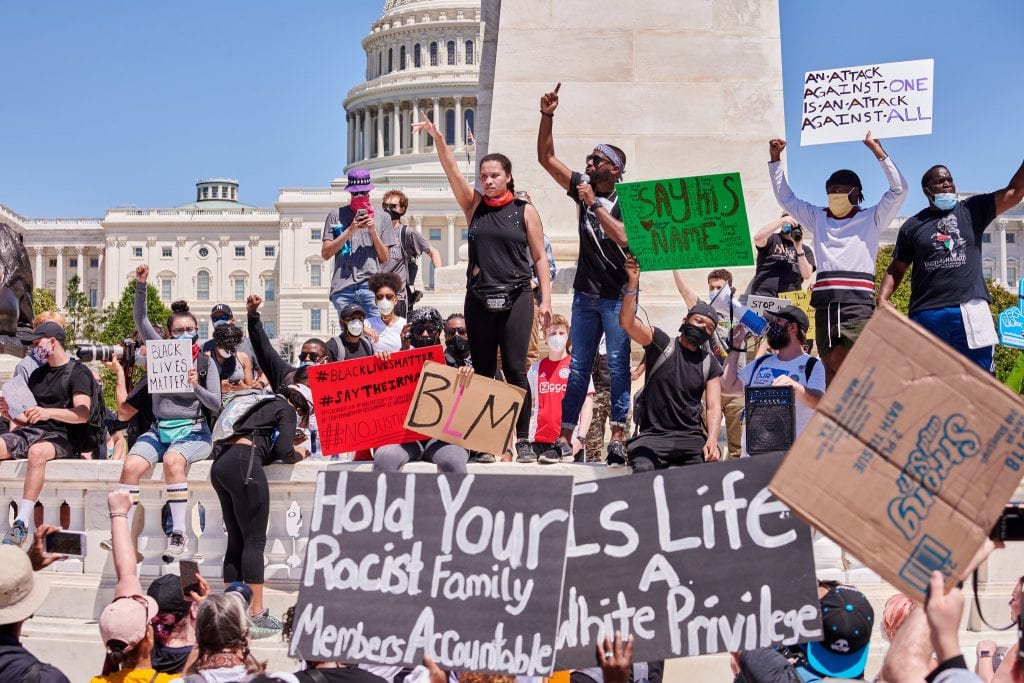
“We’re in a moment where folks are very angry and upset, across the political spectrum and across races,” says anneke dunbar-gronke, an attorney with the Lawyers’ Committee for Civil Rights. “And the mobilization around that is why tenant organizing is really at a place that it can take off.” Above, demonstrators protest George Floyd’s murder outside Capitol Hill in Washington, D.C. Photo by Geoff Livingston, via Flickr, CC BY-NC-ND
Tenant Empowerment Moving Forward
The massive nationwide protests inspired by other social issues—the #MeToo movement, police violence against Black people, women’s reproductive rights, etc.—lend themselves to supporting tenant empowerment because, dunbar-gronke says, “more experience with direct action allows folks to raise not only awareness, but urgency and the numbers [of people] that are necessary” to affect change.
“We’re in a moment where folks are very angry and upset, across the political spectrum and across races,” dunbar-gronke says. “And the mobilization around that is why tenant organizing is really at a place that it can take off.”
Not long ago, rent control was “basically a third-rail political issue,” Raghuveer says. But even people who in a different economic climate might have aspired to be homeowners are starting to recognize that their immediate future is as tenants, and “even that is highly threatened in a market that is completely unregulated.”
Romano says that when Right to the City groups around the country started introducing rent control demands, even supportive legislators didn’t want them to use that term, telling Romano’s team, “you’ll never win it; they wanted us to water it down.”
“But we’re going to call it what it is: rent control,” he says. “Long term, we want to win housing as a human right for all and that’s going to mean the decommodification of housing. This has led to tenants unions across the country seeing that as the end goal.”
Organizing for tenant power has been resurging for years, but there’s been a recent but noticeable shift in Americans’ opinions around rent control. That shift is why the Homes Guarantee campaign feels now’s the time to call on President Joe Biden to take executive action to regulate rents. Over the last several months, members of the campaign have met with Biden administration officials several times. Their goal: to convince the president to place rent increase restrictions on any landlord whose property is backed by a federally guaranteed loan.
“When we poll people—Republicans, Democrats, Black folks, white folks, younger folks, older folks—what they’re saying is this is a president’s responsibility to do something about,” Raghuveer says. “People are getting more politicized around their identity as tenants.”
People’s Action has also long been pushing for a tenants bill of rights, which would ideally legislate protections for renters at the federal level. While nationwide protections aren’t likely to pass soon, tenant advocate groups in several states have had major wins—wins that just a few years ago would have been unheard of.
Right to the City’s Romano says the tenants movement has gained such widespread support in the last few years that it’s no longer just left-leaning states like Oregon and New York passing tenants rights laws. Groups in southern states like Georgia and Florida, “territories that were off limits” until recently, are getting political traction and making demands for state-level tenants bills of rights and rent control legislation.
“So as our tenant unions organized, they started going from [asking], ‘slumlord, fix my roof,’ to knowing life is not going to be different unless we get rid of the landlord,” Romano says. “But as long as we have a landlord that’s looking out for profit, we’re going to spend our entire lives struggling to keep the roaches out and not be evicted.”
[Correction: An earlier version misidentified Tony Romano’s current job title. It has been changed.]
|
|


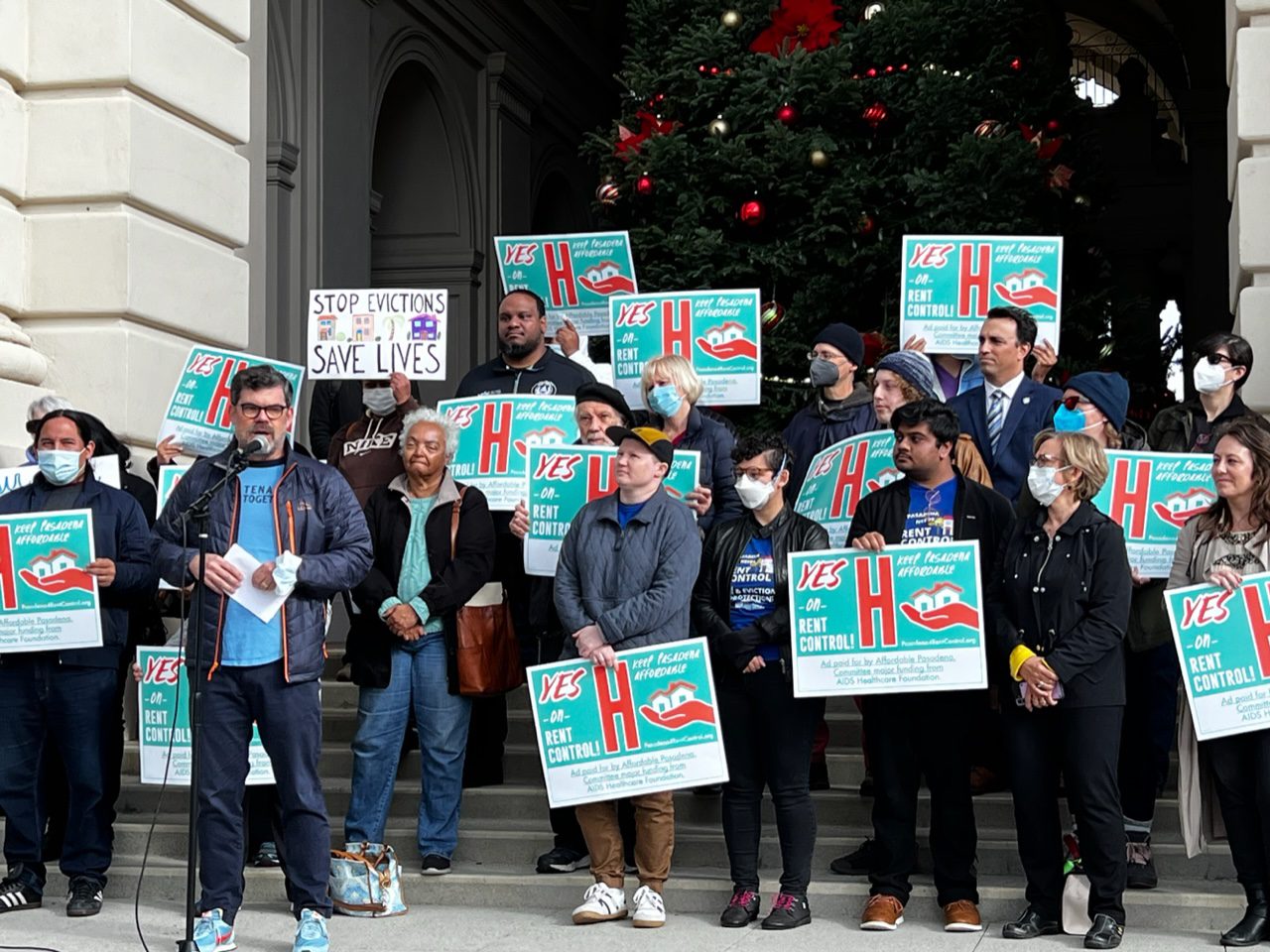
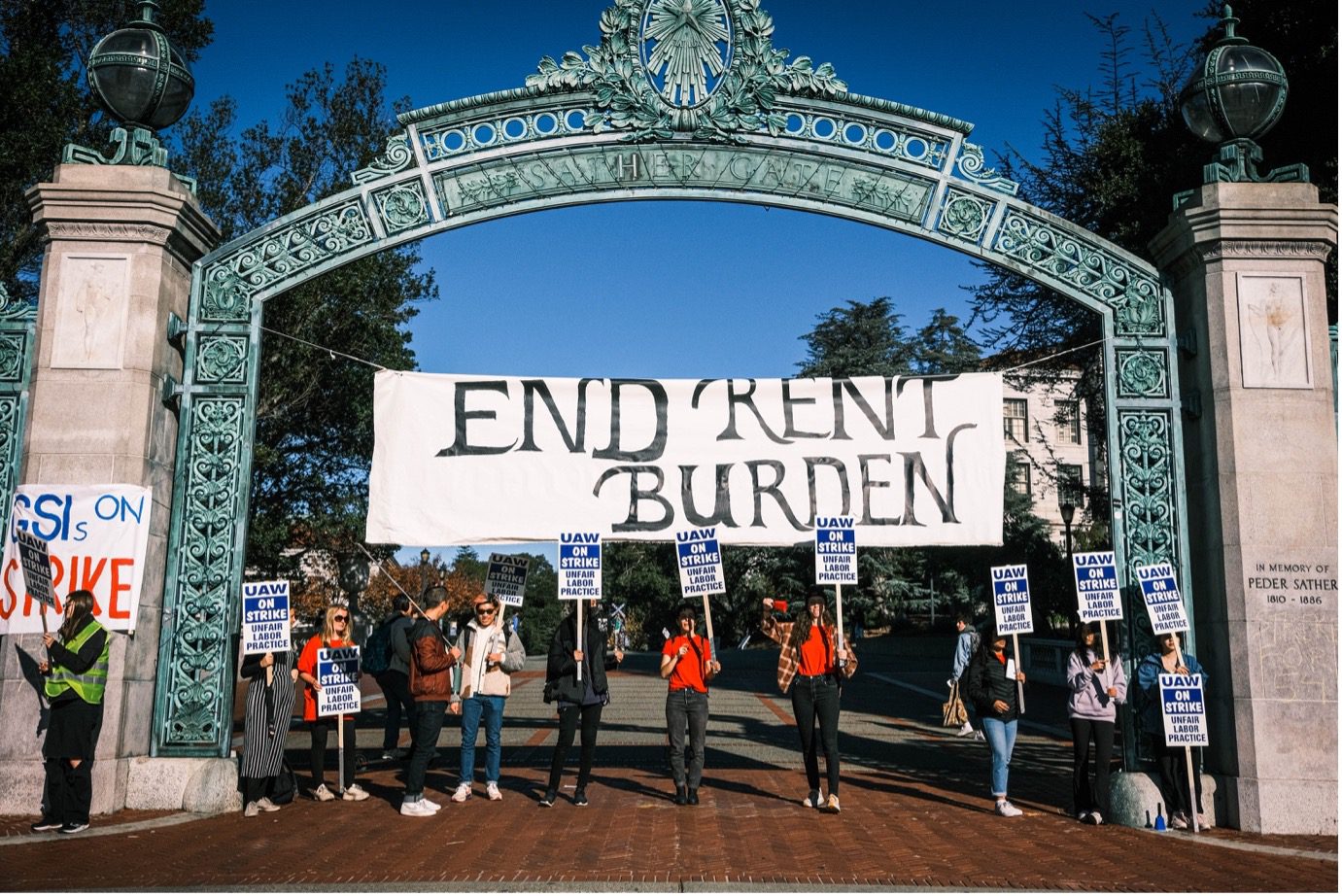
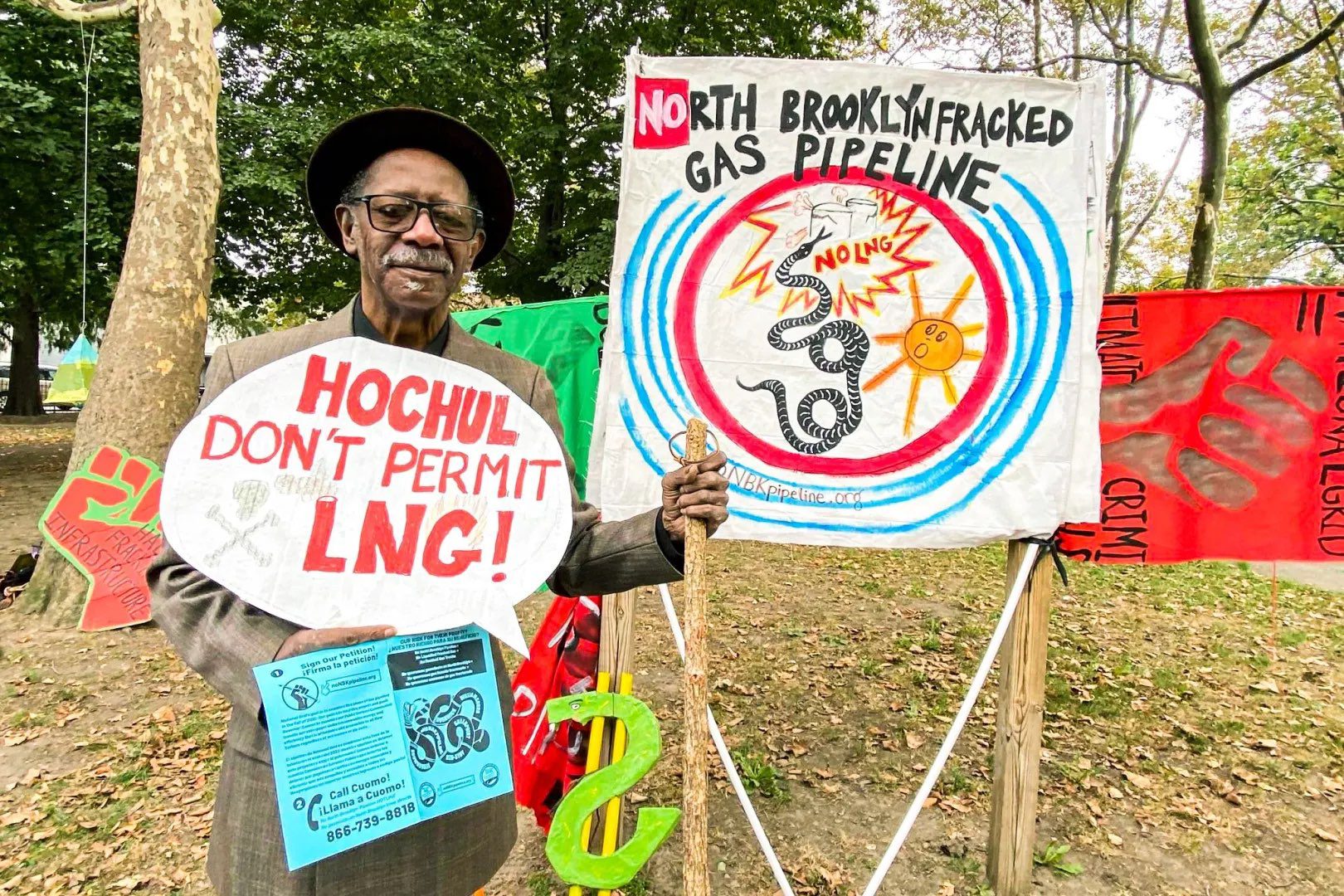
Great story! I love the way you connect the dots between so many issues that tend to get covered in silos: the foreclosure crisis, police violence, the power imbalance between landlords and tenants, the autonomous movement and how it fits in the overall tenant organizing landscape.
We just won a long and hard-fought battle for rent control and just cause in Pasadena, Calif. What you report is 100% true in our case. People said we couldn’t win, wanted us to water it down, said we should call it something else. In the end we won a very strong *charter amendment* by 7.6% in the recent election.
Ryan Bell
Tenants Together, Southern California Regional Organizer
Pasadena Tenants Union, Member Organizer